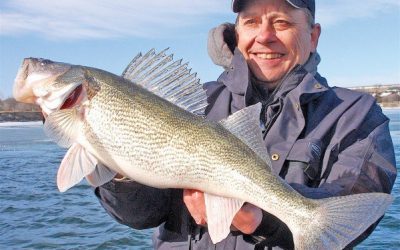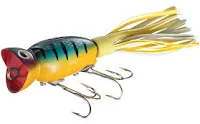Reprinted from the Sioux City Journal
If this cold weather keeps up, it won’t be long before we can venture out on the ice in pursuit of fish. With that in mind, now is the time you should get out your ice fishing lures and check them over.
First thing to look at is the hooks. Make sure they are sharp and haven’t been damaged. Look for things like bent out points or rolled in points. Either fix them or replace them.
Most of the lures made for ice fishing will fit into three categories. All are designed or can adapt to fishing vertically. They would be lead head jigs, jigging spoons and swimming lures.
First would be what I call the lead heads. This would include most panfish ice lures, such as tear drops, or any lure with lead in its makeup, including the regular lead head jigs. Using very soft plastics to tip these lures is very popular right now. And tungsten jigs are hot among ice fishermen. These new jigs, when tipped with very soft plastics, have produced a lot of fish.
Believe it or not, but there are now jigs for fly fishing. When tied they imitate insects that fish like to eat in the wintertime; they should be fantastic. I’ve used flies for ice fishing for a long time since fly tying is one of my hobbies. But these new jigs created for fly fishing are a big step up. They consist of a tungsten bead that fits onto a small jig hook with a 45-degree angle bend.
I’ve tied up a bunch of them for fly fishing, and I can’t wait to take them out on the ice.
While some of the soft plastics can be fished without bait, most lead head lures need to be fished with bait. Wax worms, spikes and minnows are most often used.
I like to fish wax worms on a gold tear drop for bluegills. I simply hook the waxie in the middle and squeeze out the juice. This adds some scent to the presentation and, since bluegills have such small mouths, makes it easier for them to get hooked. Those two flaps of skin flapping on each side of the hook also makes a tempting presentation.

Yellow Perch are a popular gamefish through the ice. Cory Waubay Lakes Guide Service shows a nice catch taken on jigging lures.
Spikes are actually maggots that are raised specifically for ice fishing. To be used effectively, they must be hooked correctly. When you look at one of these maggots, you’ll notice a point end and a flat-faced end with two dark spots on the flat face. You should hook this larvae through that flat face. That way the maggot will continue to wriggle for a long time. I usually fish at least three maggots on any panfish presentation and I often even apply more.
When it comes to minnows, most anglers simply hook them through the lips, but minnows hooked through the lips don’t seem to have much action, especially if you are using a heavy jig or spoon. If you hook them through the tail, they will continue to try to swim away from the lure. Simply slide the hook under the skin in front of the tail on the side of the minnow.
If you are fishing a minnow on a bare hook under a float, try hooking him alongside the dorsal fin with the point of the hook facing the front of the minnow. Game fish engulf minnows head first so the hook facing foreword is ready for action.
This style of hooking also puts the minnow off balance so he will be constantly moving, trying to become upright.
You need to change baits more often when using these minnow-hooking methods, but these little adjustments will result in more fish caught.
When it comes to spoons, I’ve probably caught more fish on a Swedish Pimple than any other. That’s because when I started ice fishing, there wasn’t a lot of choice. I carried both the pimples and Kastmaster spoons just about exclusively in silver.
More outdoors information can be found at http://siouxcityjournal.com/sports/recreation/outdoors





0 Comments